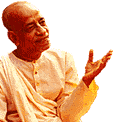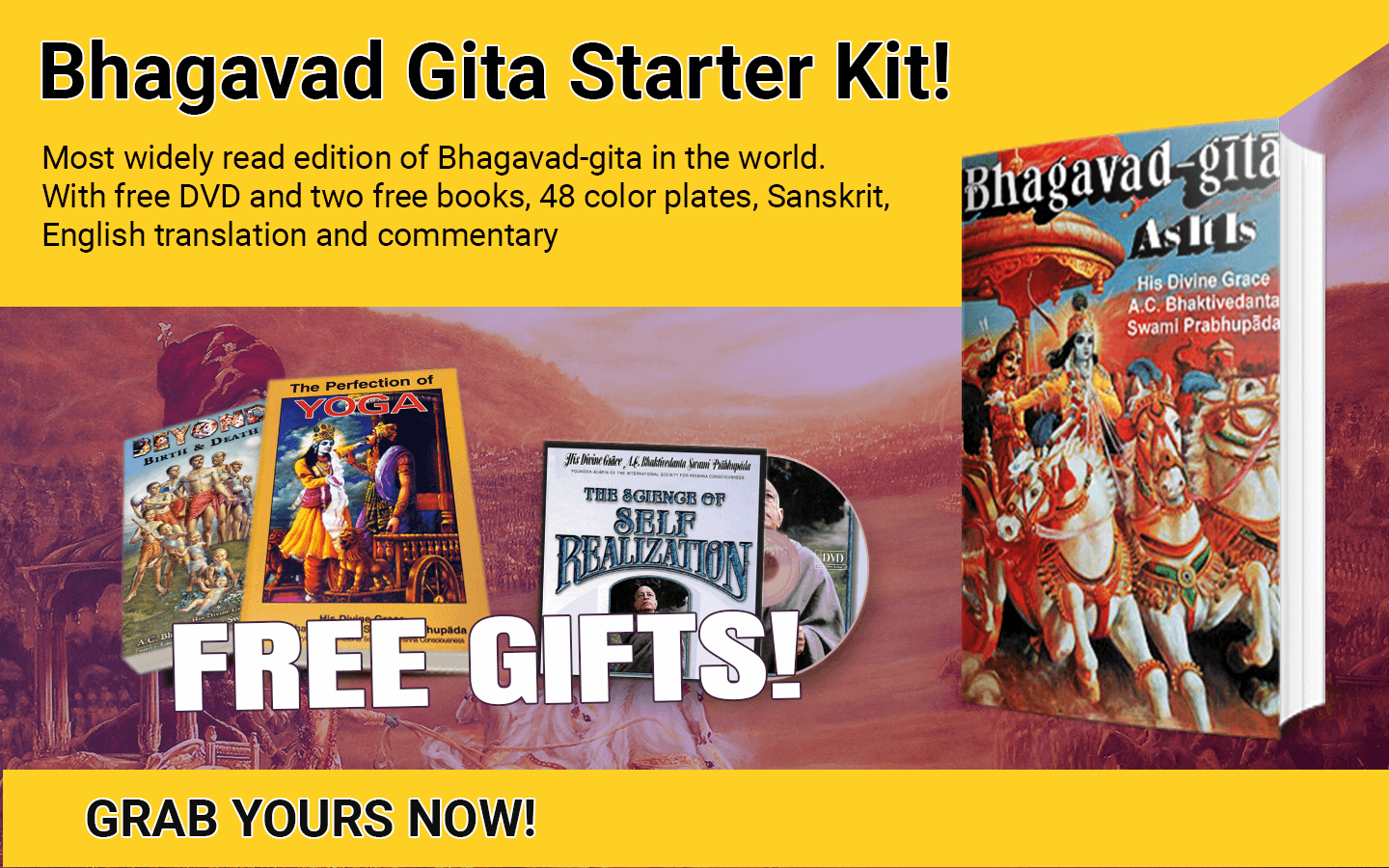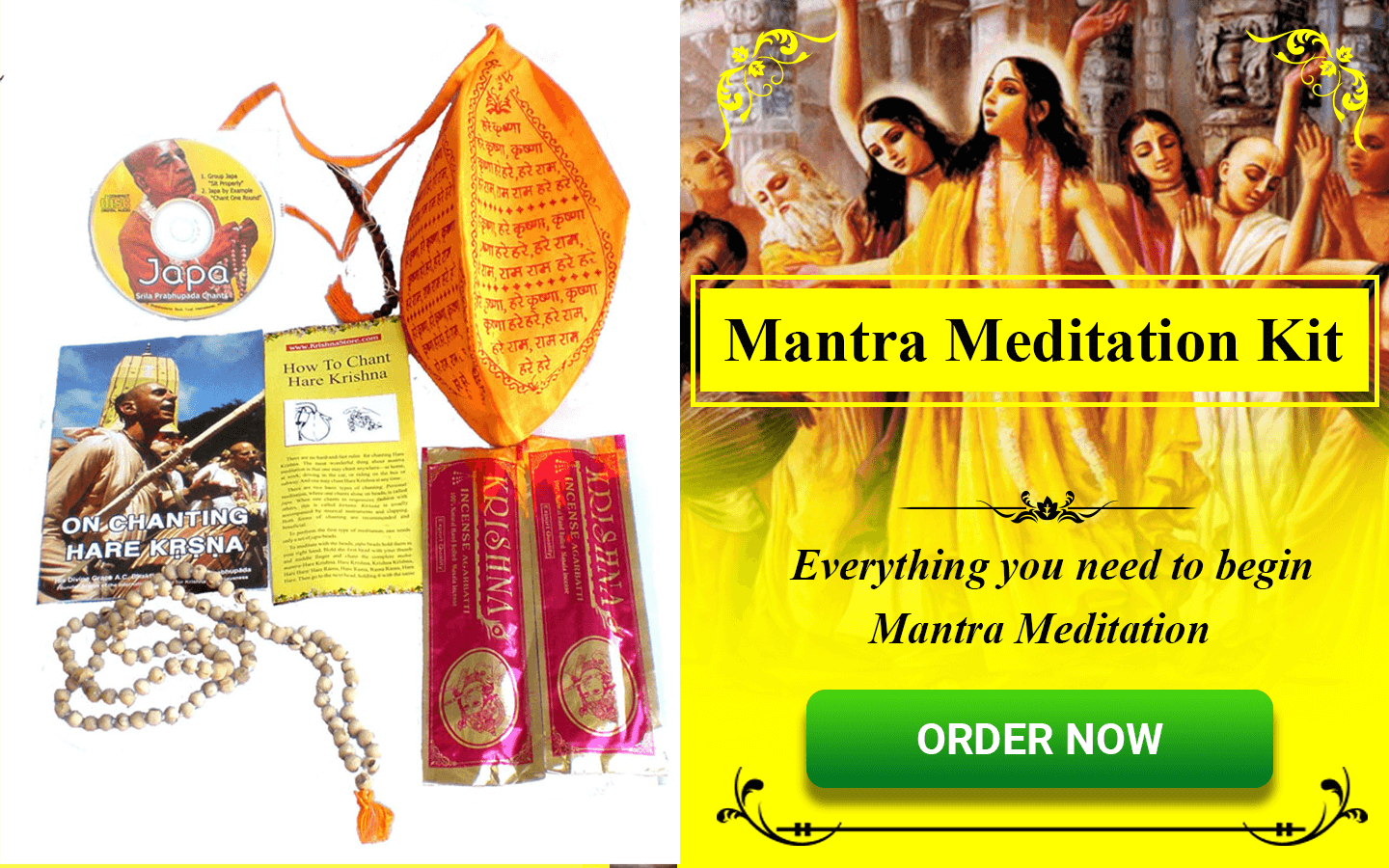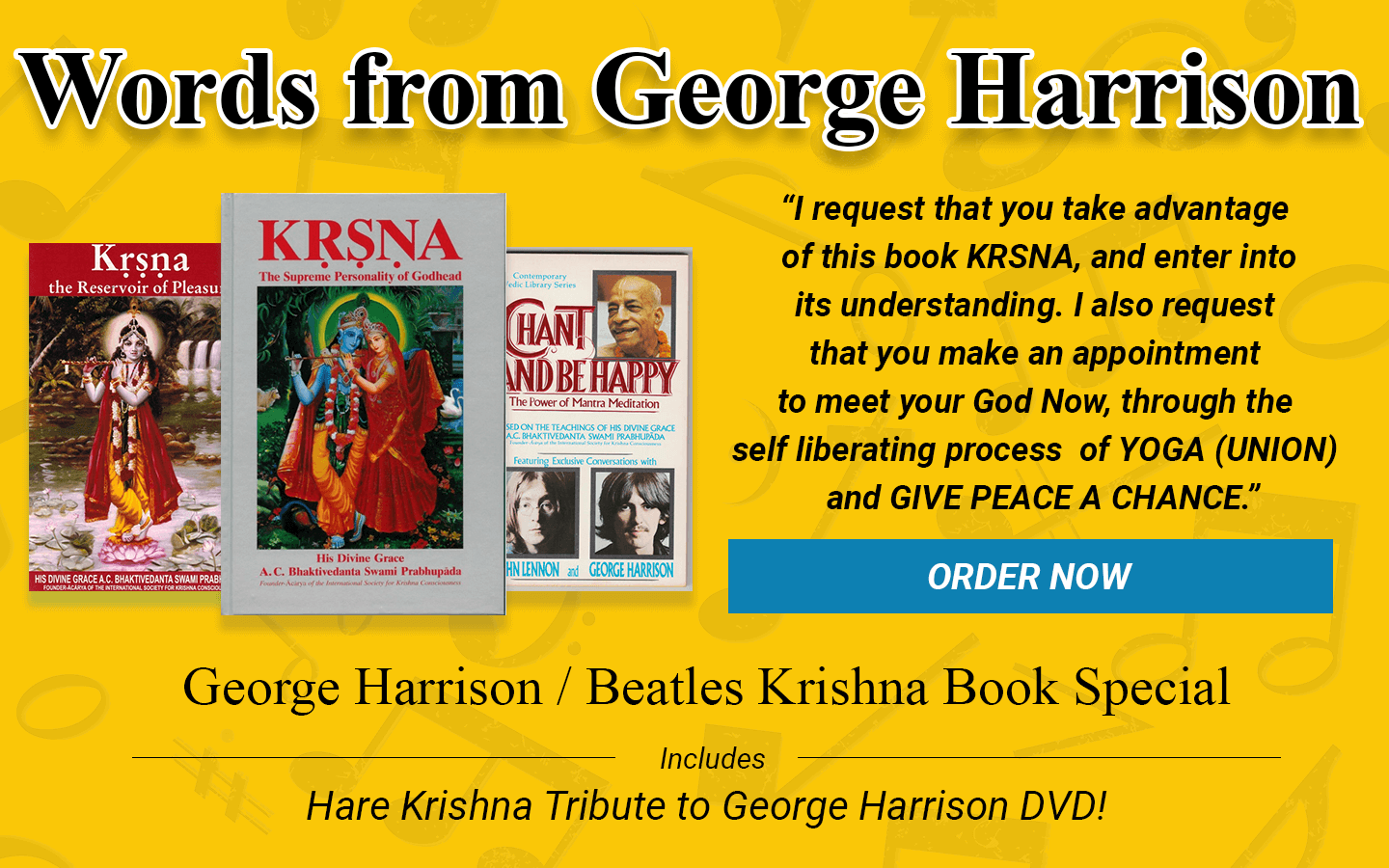Chapter 1: Observing the Armies on the Battlefield of Kuruksetra
Bg 1.20
TEXT 20
atha vyavasthitan drstva
dhartarastran kapi-dhvajah
pravrtte sastra-sampate
dhanur udyamya pandavah
hrsikesam tada vakyam
idam aha mahi-pate
dhartarastran kapi-dhvajah
pravrtte sastra-sampate
dhanur udyamya pandavah
hrsikesam tada vakyam
idam aha mahi-pate
SYNONYMS
atha—thereupon; vyavasthitan—situated; drstva—looking on; dhartarastran—the sons of Dhrtarastra; kapi-dhvajah—one whose flag is marked with Hanuman; pravrtte—while about to be engaged; sastra-sampate—the arrows released; dhanuh—bow; udyamya—after taking up; pandavah—the son of Pandu (Arjuna); hrsikesam—unto Lord Krsna; tada—at that time; vakyam—words; idam—these; aha—said; mahi-pate—O King.
TRANSLATION
O King, at that time Arjuna, the son of Pandu, who was seated in his chariot, his flag marked with Hanuman, took up his bow and prepared to shoot his arrows, looking at the sons of Dhrtarastra. O King, Arjuna then spoke to Hrsikesa [Krsna] these words:
PURPORT
The battle was just about to begin. It is understood from the above statement that the sons of Dhrtarastra were more or less disheartened by the unexpected arrangement of military force by the Pandavas, who were guided by the direct instructions of Lord Krsna on the battlefield. The emblem of Hanuman on the flag of Arjuna is another sign of victory because Hanuman cooperated with Lord Rama in the battle between Rama and Ravana, and Lord Rama emerged victorious. Now both Rama and Hanuman were present on the chariot of Arjuna to help him. Lord Krsna is Rama Himself, and wherever Lord Rama is, His eternal servitor Hanuman and His eternal consort Sita, the goddess of fortune, are present. Therefore, Arjuna had no cause to fear any enemies whatsoever. And above all, the Lord of the senses, Lord Krsna, was personally present to give him direction. Thus, all good counsel was available to Arjuna in the matter of executing the battle. In such auspicious conditions, arranged by the Lord for His eternal devotee, lay the signs of assured victory.
Copyright (c) 1972 by His Divine Grace A.C. Bhaktivedanta Swami Prabhupada










